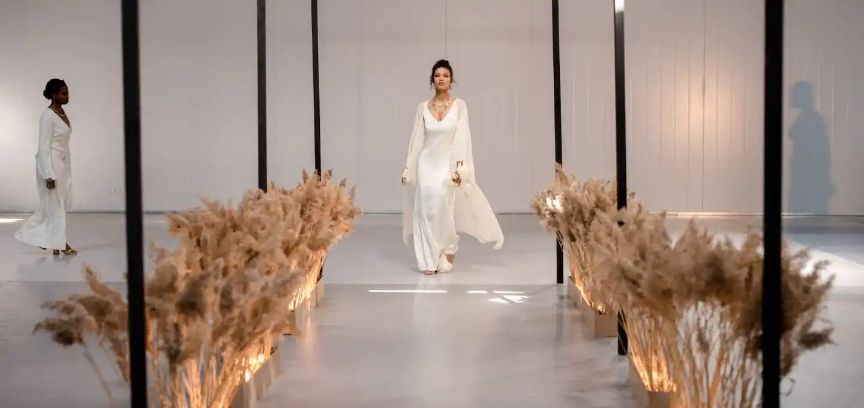Inclusive Fashion: Celebrating Diversity on the Runway
3 min read
10 Apr 2024
The fashion industry, once synonymous with exclusivity and uniformity, is undergoing a transformative shift towards inclusivity and diversity. As society becomes more conscious of the importance of representation, fashion designers, brands, and runway shows are embracing a more inclusive approach. In this article, we'll explore the significance of inclusive fashion and how it's reshaping the industry.
1. A Shift in the Fashion Paradigm:
Historically, the fashion industry has often perpetuated narrow beauty standards, featuring predominantly thin, white, and able-bodied models. In recent years, there has been a growing recognition that this lack of diversity not only excludes a significant portion of the population but also perpetuates harmful stereotypes and ideals.

2. Representation Matters:
Inclusive fashion acknowledges that representation matters. When individuals from various backgrounds, ethnicities, body types, genders, and abilities see themselves represented on the runway, in campaigns, and in advertisements, it sends a powerful message of acceptance and belonging.
3. A Broader Definition of Beauty:
Inclusive fashion challenges conventional notions of beauty. It celebrates the uniqueness and individuality of each person, emphasizing that beauty comes in diverse forms. This shift fosters self-acceptance and body positivity.
4. Expanding Opportunities:
Inclusive fashion opens doors for models and designers who have traditionally been underrepresented in the industry. It creates opportunities for people of all backgrounds to pursue careers in fashion and contribute their creative talents.
5. Breaking Gender Norms:
Fashion has long been associated with strict gender norms, but inclusive fashion is breaking these boundaries. Gender-neutral and gender-inclusive clothing lines challenge traditional binary definitions and embrace the fluidity of gender expression.
6. Adaptive Fashion:
Inclusive fashion includes adaptive clothing designed to meet the specific needs of individuals with disabilities. These garments prioritize functionality without sacrificing style, making fashion accessible to all.
7. Celebrating Cultural Diversity:
Inclusive fashion embraces cultural diversity by drawing inspiration from a wide range of traditions and styles. It acknowledges the beauty of cultural heritage and promotes cross-cultural understanding.
8. A Force for Social Change:
Fashion is not just about clothing; it's a form of social expression and activism. Inclusive fashion can be a powerful force for social change by challenging stereotypes, advocating for equal rights, and promoting social justice.
9. Inclusive Runway Shows:
Fashion shows are evolving to reflect a more inclusive vision of beauty. Runway shows featuring models of different ages, sizes, abilities, and backgrounds are gaining prominence. These shows redefine what it means to be fashionable.
10. Diverse Casting:
Fashion brands are diversifying their model casting, choosing models of different races, genders, and abilities to represent their collections. This shift promotes authenticity and inclusivity.
11. Adaptive and Inclusive Brands:
A new wave of adaptive and inclusive fashion brands is emerging. These brands prioritize clothing that accommodates a wide range of body types and needs, ensuring that fashion is accessible to everyone.
12. Influential Figures:
Influential figures in the fashion industry, such as designers, models, and activists, are using their platforms to advocate for inclusivity. They challenge industry standards and promote positive change.
13. Consumer Demand:
Consumers play a pivotal role in driving the shift towards inclusive fashion. Increased demand for diverse and ethical fashion options encourages brands to prioritize inclusivity in their designs and marketing.
14. The Business of Inclusivity:
Inclusivity is not just a moral imperative; it's also good for business. Brands that embrace diversity and inclusivity tend to have a broader customer base and increased customer loyalty.
15. A Vision for the Future:
The future of fashion is undeniably inclusive. As the industry continues to evolve, inclusivity will become the norm rather than the exception. This vision of fashion celebrates the beauty of every individual and empowers them to express themselves authentically.
Conclusion:
Inclusive fashion is not a passing trend but a transformative movement that is reshaping the industry from the inside out. It celebrates diversity, challenges stereotypes, and promotes a more accepting and open-minded society. As consumers, we have the power to support and advocate for inclusive fashion by choosing brands that prioritize diversity and representation. In doing so, we contribute to a more inclusive and accepting world where fashion truly reflects the beauty of humanity in all its forms. Inclusive fashion is not just about clothing; it's about embracing the richness of human diversity and celebrating it on the runway and beyond.



